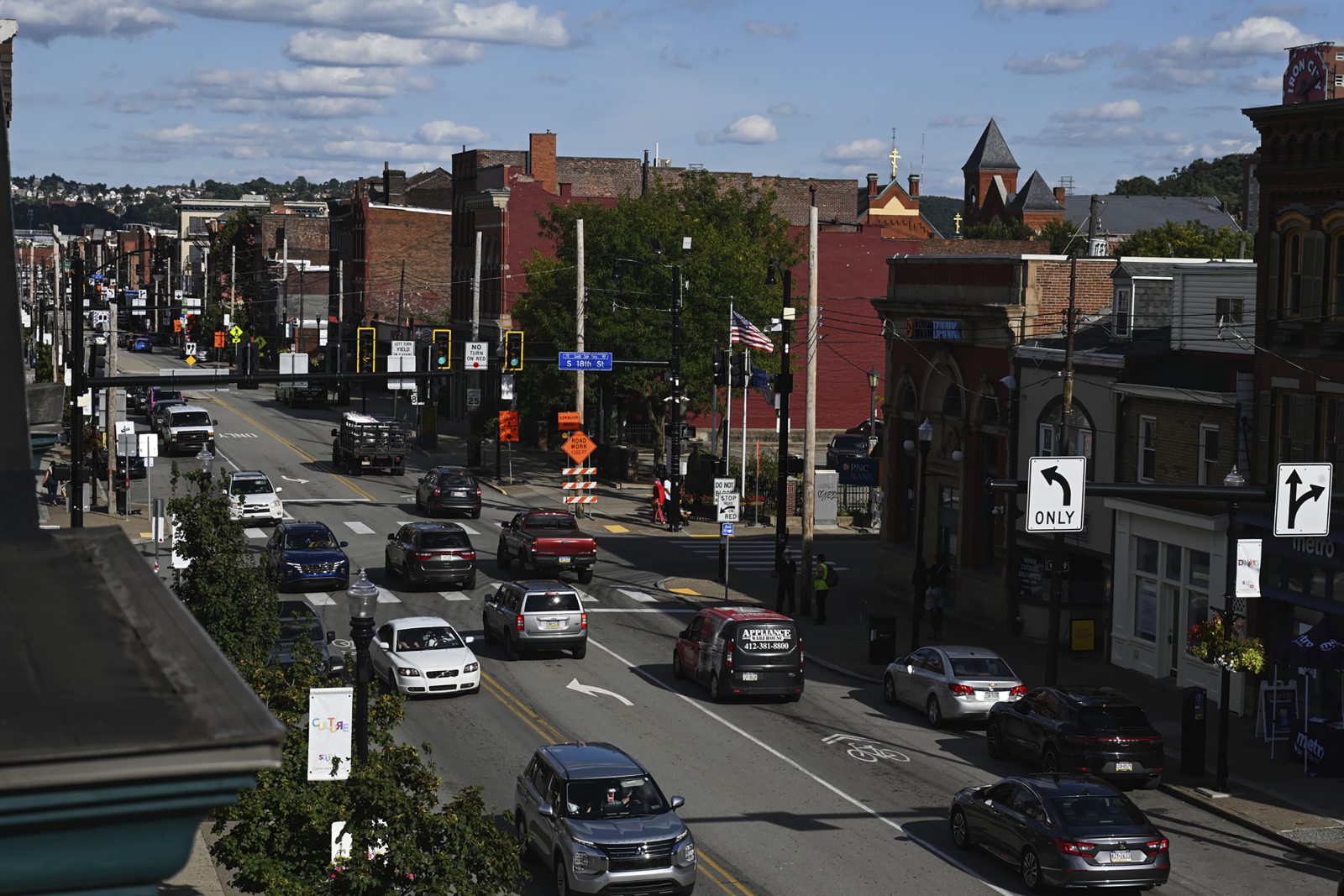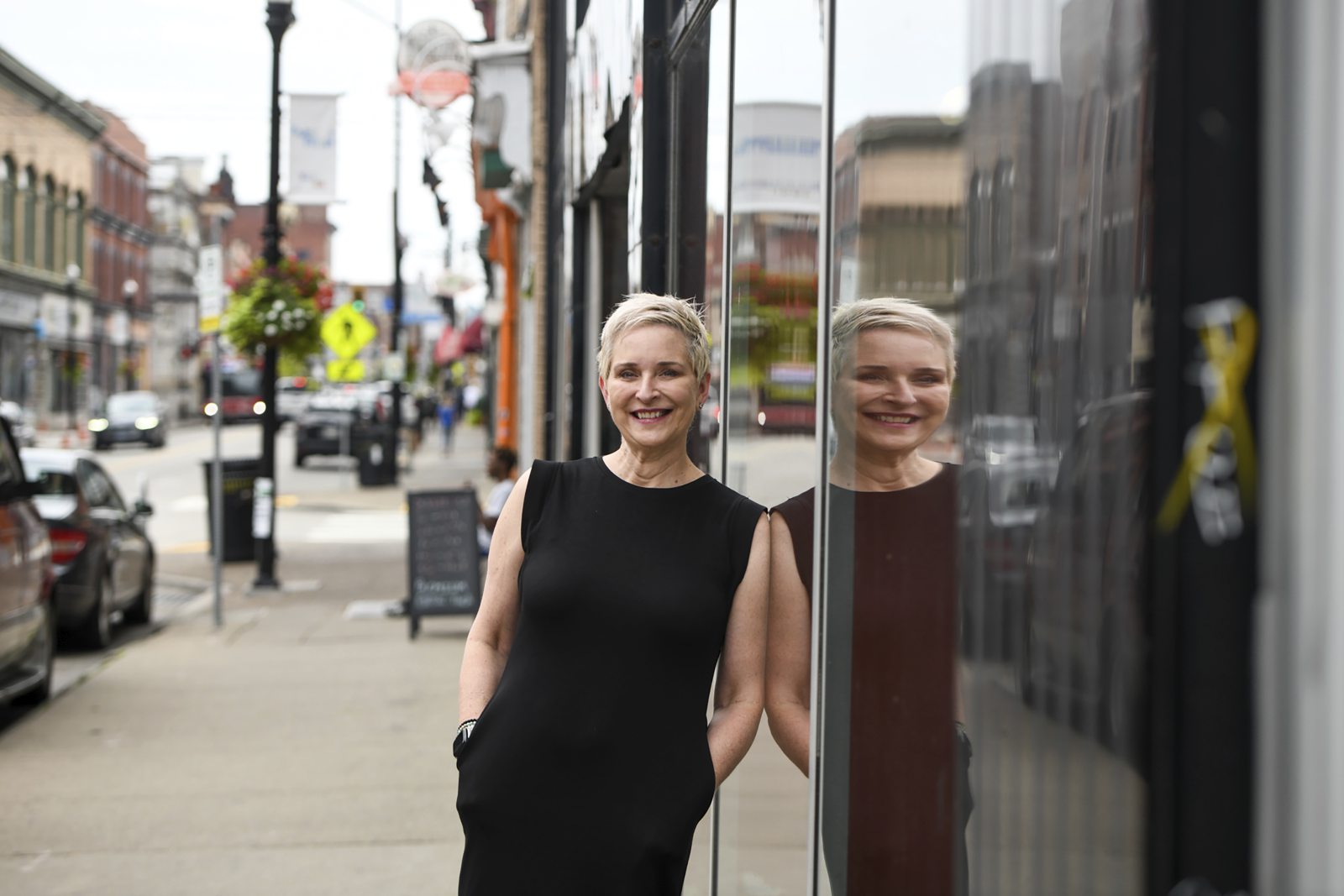
Story by JULIA BURDELSKI
Photos by KRISTINA SERAFINI
TribLive
Sept. 14, 2025
Pittsburgh’s best-known bar and nightlife district has been attracting attention lately for all the wrong reasons.
This summer, a spike in trouble on the South Side drew a heavy police response to control unruly crowds. Malcontents threw fireworks at officers, leading the head of the police union to label the neighborhood a “disaster.” Isolated incidents of gunfire underscored the potential dangers lurking along East Carson Street.
The focus on crime on the South Side — long known as the city’s premier hangout for beery college students — is so intense that public safety officials release weekly statistics for citations and arrests by a special patrol there. It’s one of only two spots in the city meriting such scrutiny, the other being Downtown.
Business owners and residents acknowledge South Side has struggled mightily with its bad-boy image, which doesn’t quite fit the vibe of the “15 blocks of Victorian architecture” touted by Visit Pittsburgh, the city’s tourism agency, in its description of the neighborhood.
Bob Charland, the councilman who represents the embattled retail strip, is painfully aware of the image problem.
“I think South Side is what happens when a business district is neglected or left unmanaged,” Charland told TribLive recently.
But residents, community activists and business owners are now paying close attention as they press to change the narrative and restore some lost luster.
Tired of the South Side’s downward reputational spiral, they’re spearheading an effort to uplift the stretch of East Carson Street from 10th to 28th Streets through a concerted rebranding effort. They want to attract an eclectic array of businesses, drive down vacancy rates, beautify East Carson and draw new patrons.
The stretch of the entertainment district includes 77 food and beverage establishments, 39 retailers, four exercise and fitness businesses and 14 residential units.
Lora Sigesmund, co-owner with her husband of the PerLora furniture store in the heart of the district, is one merchant who sees promise in the turnaround efforts.
With more than 30 years in business, Sigesmund has watched unique stores and once-popular restaurants close, leaving lifeless, empty buildings.
“We know it can be a cool place in Pittsburgh again,” Sigesmund said. “We’ve been here for the long haul. We plan on being here. We just need to attract new people.”

At the heart of the initiative is Susan Anderson. Since January, she’s been working as East Carson Street’s business district manager.
Her varied job duties include helping entrepreneurs spruce up their storefronts and playing “matchmaker” between businesses and property owners.
Anderson, who has a graphic design degree from Carnegie Mellon University and a background in marketing, is a Pittsburgh native who moved to Southern California and raised a family there before returning home.
Anderson has a vested interest in success: She is a South Side resident, making a home with her husband in a former church.
While the neighborhood houses the city’s greatest concentration of bars, restaurants, pubs and nightclubs, Anderson, Charland and an active bunch of neighborhood groups are encouraging people to think of the community as more than a place that caters to beer-soaked college students out for a night on the town.
That’s not to say she’s out to alienate bar owners. Far from it.
Recently, Anderson helped arrange “Shop, Sip and Stroll,” which supported bars, restaurants and retailers.
John DeMauro, owner of the Urban Tap bar, approves.
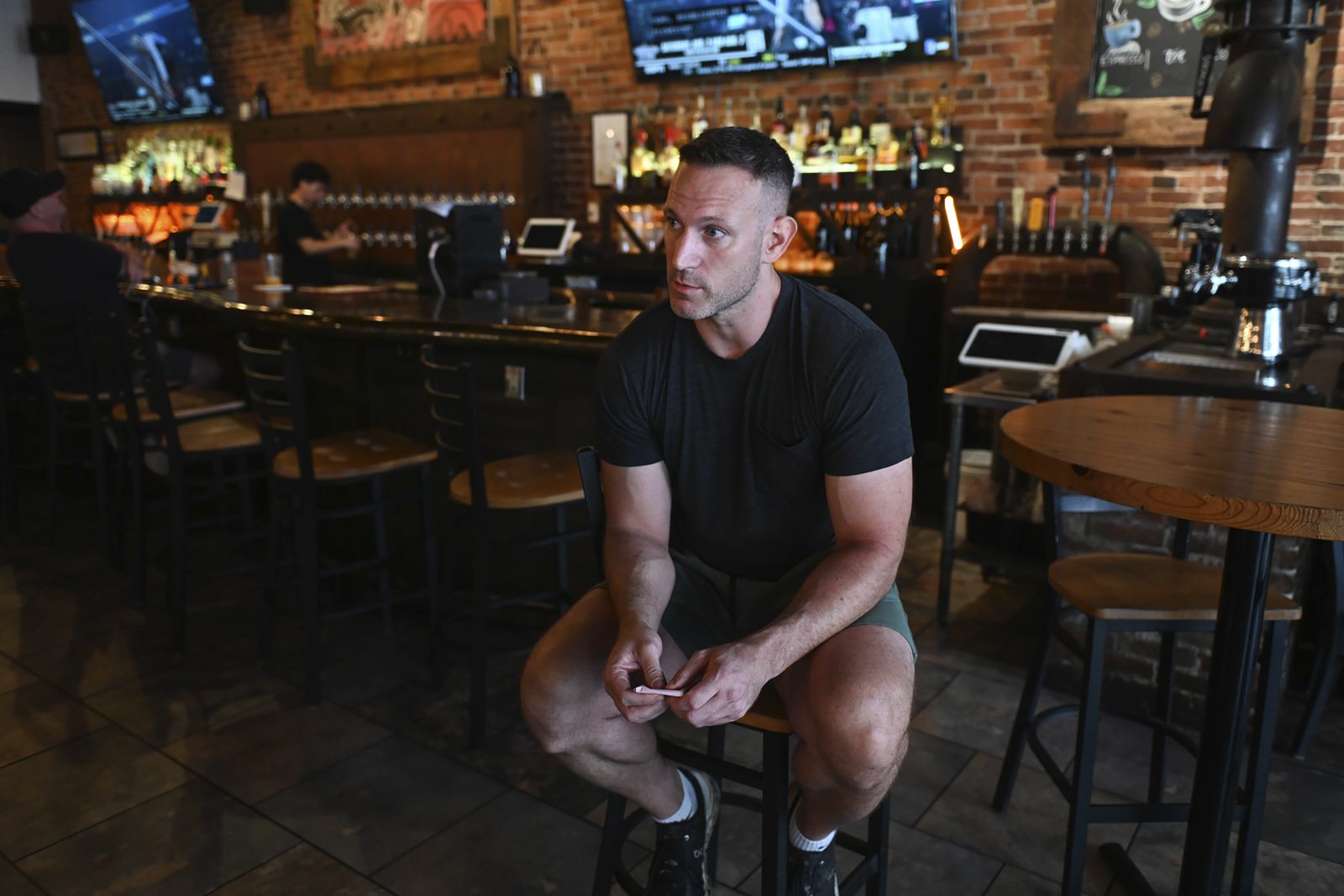
“We have somebody who’s really in a position to be eyes and ears on the street,” DeMauro said. “She’s the front line. She’s that initial contact.”
Aaron Sukenik, vice president of district development at the Pittsburgh Downtown Partnership, credits Anderson with driving down vacancies since she started at the beginning of the year.
In March, nearly a quarter of South Side’s storefronts were vacant. By August, that dropped to 17%.
Sukenik, who served as South Side’s last business district manager from 2010 to 2012, is encouraged by Anderson’s early success.
Anderson launched Art on Carson, a program that places local artwork in empty windows along the corridor. One building hosts an array of Pittsburgh-themed images, for instance, such as a painting of a yellow bridge.
Art in a window may not be as good as a business moving into an empty building, Charland said — but it’s better than nothing.
“We want it to look alive,” the councilman said. “We want it to look thriving.”
Already, a unique mix of “hidden gems” lures people to South Side, said Anderson. She pointed to a dance studio, a tai chai school, a pretzel shop, a store selling handmade soaps and a business that sells old-fashioned candy.
As Anderson walked up and down East Carson Street on a July weekday, she greeted shop owners, police officers and a member of the neighborhood’s clean team, a group dedicated to tidying up the streets and sidewalks.
Anderson highlighted ongoing beautification efforts — flowers outside of businesses, fresh paint for rundown storefronts, modernized window displays that could attract customers.
And she rattled off a list of things she’d like to see next — a new grocery store, a bakery, an arts alliance.
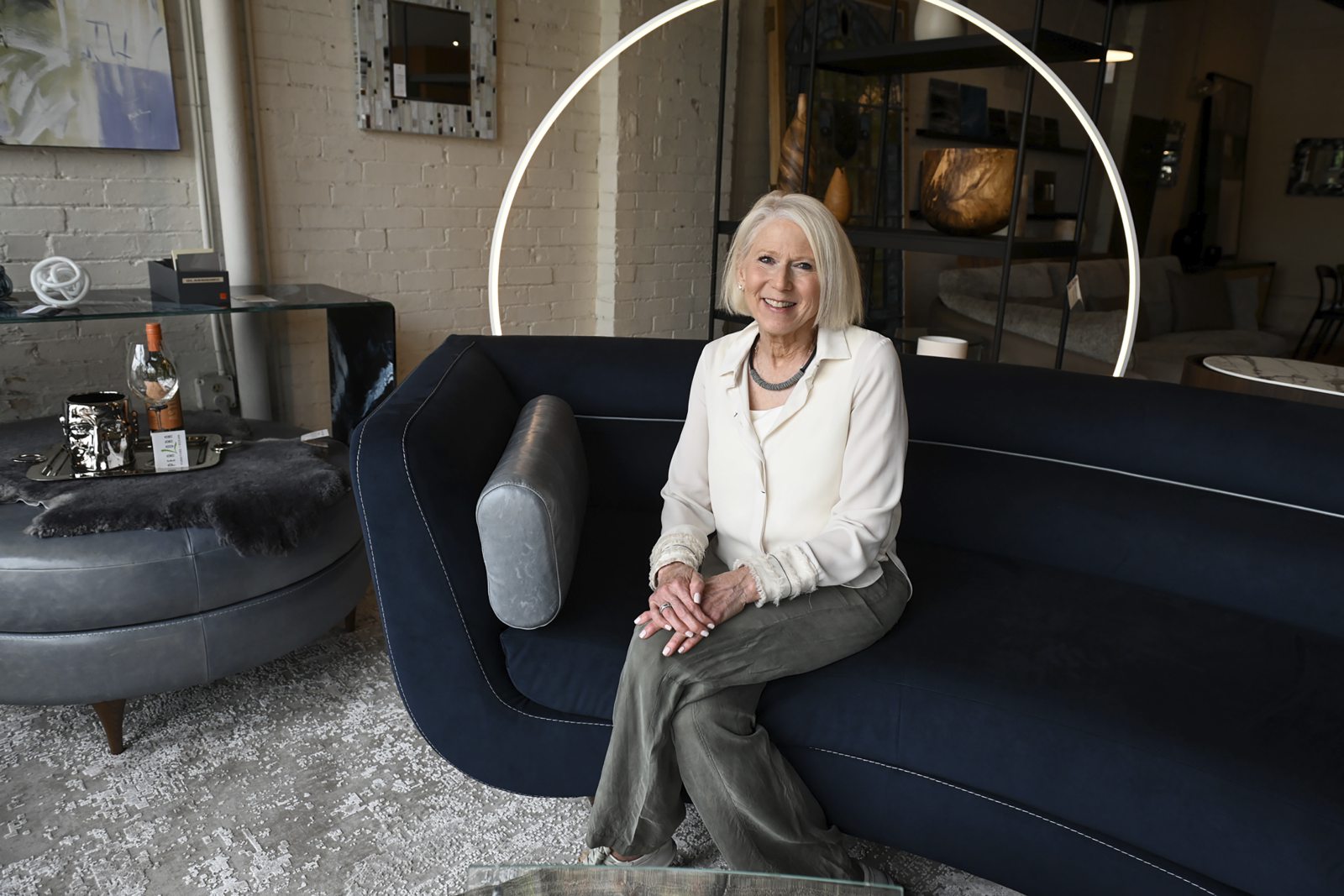
When Angelica Daniele tells people she’s opening her fourth yoga studio — this one on East Carson Street — she’s sometimes met with skepticism.
Some people have warned her to be careful in the neighborhood. Others have told her they think businesses want to move out of South Side rather than move in.
But Daniele’s new landlord, Anna Campbell, convinced her that neighborhood leaders are delivering on their goals to make South Side more vibrant and diverse.
South Siders, the landlord said, wanted a yoga studio in the neighborhood.
“The first decision starts with the landlord — you decide what kind of business you rent to,” Campbell said.
A vape shop had been renting the space, Campbell said. When the lease ended, she wanted to find a business that could satisfy a need in the community, which already had several vape shops. Daniele’s yoga studio filled a void, according to Campbell.
Charland views South Side’s future as a balancing act between maintaining a vibrant, “punk rock” nightlife scene and adding more daytime businesses that attract people of all ages, from all over the region, at all times of day.
He’s bullish on the collaborative efforts of everyone “rowing in the same direction” to make substantive changes.
“They believe this neighborhood could be something more,” Charland said.
Conner Capozoli is one of those believers.
This summer, the chef recently opened Capozoli’s Trattoria Ristorante, serving Italian cuisine in an East Carson Street site that had sat empty for about six months.
He feels his restaurant is filling a need.
“If I wasn’t a restaurant owner and I came down, I wouldn’t want to go to a bar to eat,” Capozoli told TribLive, donning a white chef’s jacket during an interview with TribLive. “I’d want something nicer. That’s my style.”
Capozoli, whose father grew up nearby on 14th Street, said his hope for the neighborhood is a combination of restaurants, bars and shops that offers something for every taste.
“Everybody knows what South Side is,” he said. “Obviously, people are going to think bars — but it would be nice if we had more restaurants. I think we could get there.”
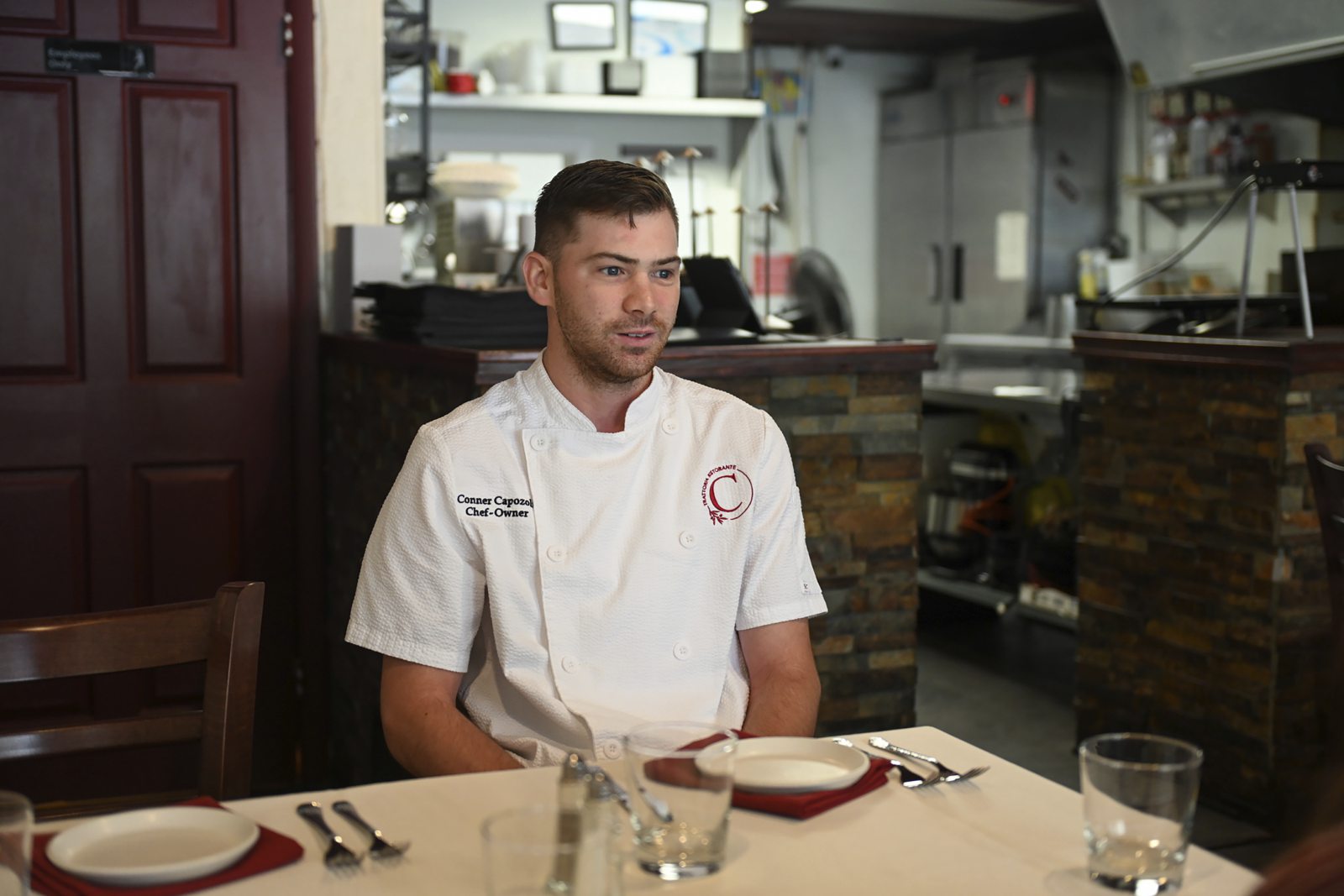
Not everyone buys the notion that artwork and flowerpots will tamp down trouble on Friday and Saturday nights.
Mark Rauterkus, 66, a longtime South Side resident, said he thinks the city needs more structured programs to keep kids occupied. He wants bigger changes to ensure they have more meaningful ways to spend their time than convening on East Carson Street in the early morning hours.
“These flower baskets are nice,” Rauterkus said recently, shrugging at a planter on Carson Street. “But I don’t know. I’m just more about life-changing things.”
Lifelong South Side resident Rich Cupka, who operates a pair of bars in the neighborhood, doesn’t want a business district manager or any city officials intervening.
All he wants is a stronger police presence to curb crime.
“If there’s no public safety, they can paint every dumpster, they can paint every vacant window with beautiful pictures and it won’t matter,” Cupka said. “They want to put out their narrative that things are getting better. But the only thing that works is public safety with increased police.”
Pittsburgh police Commander Jeffery Abraham is part of the strategy.
Abraham said law enforcement has been working with residents and business owners to address the problems that gave South Side a bad reputation.
In the two years he’s served as commander of the zone, he said, there have been “huge strides” in improving public safety.
Homicides, shootings and rapes have declined. Partnerships between police and the community have expanded.
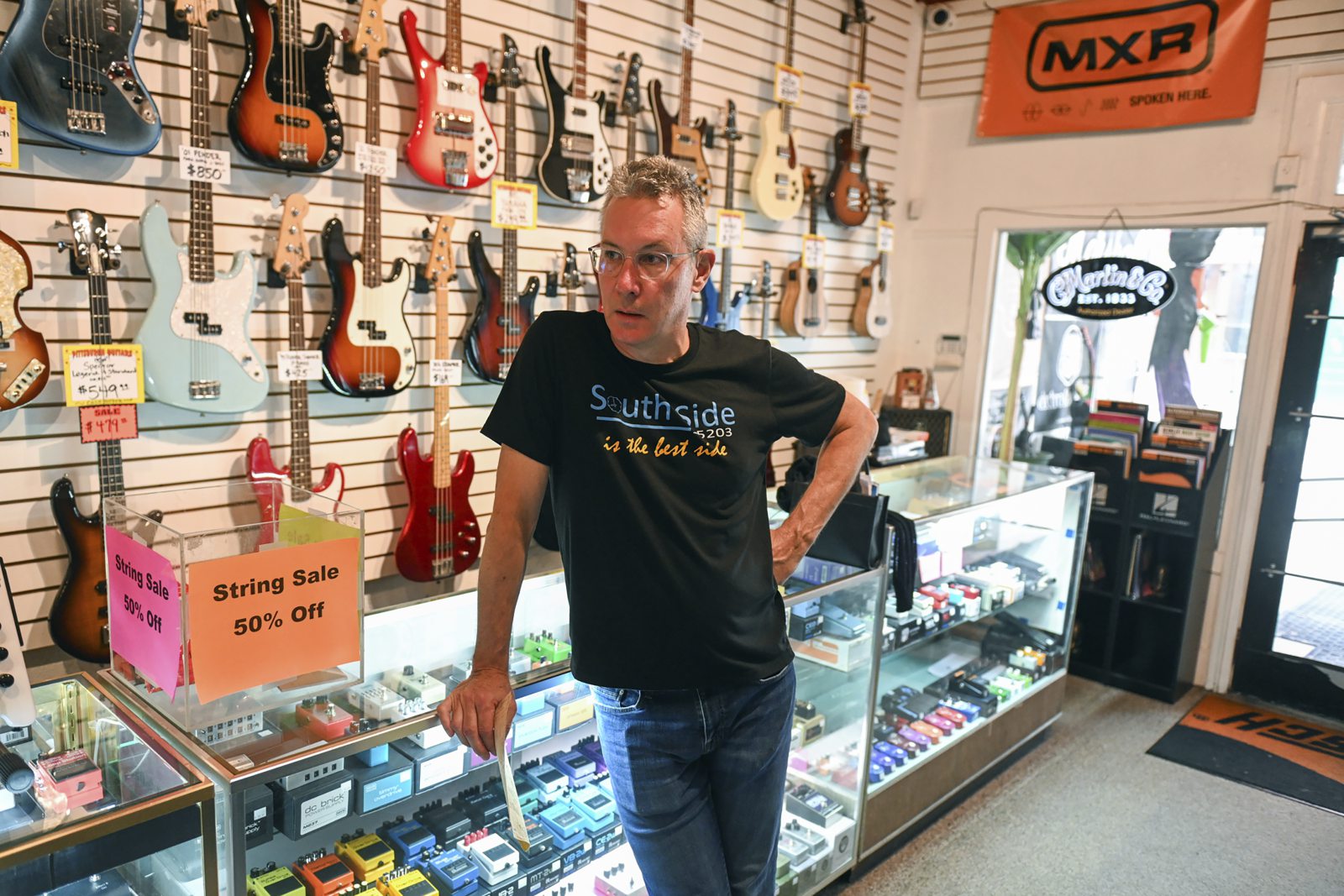
Rebeca Kasavich, owner of Copies on Carson, fondly recalls South Side’s frequent carnivals and an annual kids’ Halloween parade that marched along East Carson Street.
During her quarter-century in business, she watched a hospital on East Carson Street close and witnessed businesses shuttering during the covid-19 pandemic.
Kasavich can’t think of another time when everyone — business owners, community leaders, residents — was so focused on bettering the neighborhood and getting the word out.
She doesn’t think the daytime and nighttime economies are at odds. Instead, she said, they can complement each other.
“It certainly isn’t daytime versus nighttime, not at all,” she said. “It’s a collaboration.”
Kasavich acknowledged the recent wave of negative attention on South Side in recent years.
Some residents felt their community has been thrust into a harsh spotlight with scrutiny over every negative incident that cropped up in the entertainment district.
Maybe that’s why so many people in the community are pushing to spread a more positive message, she said.
“This is our home,” Kasavich said. “We’re not just going to hand it over to a handful of people who have negative things to say about it or who are doing negative things.”
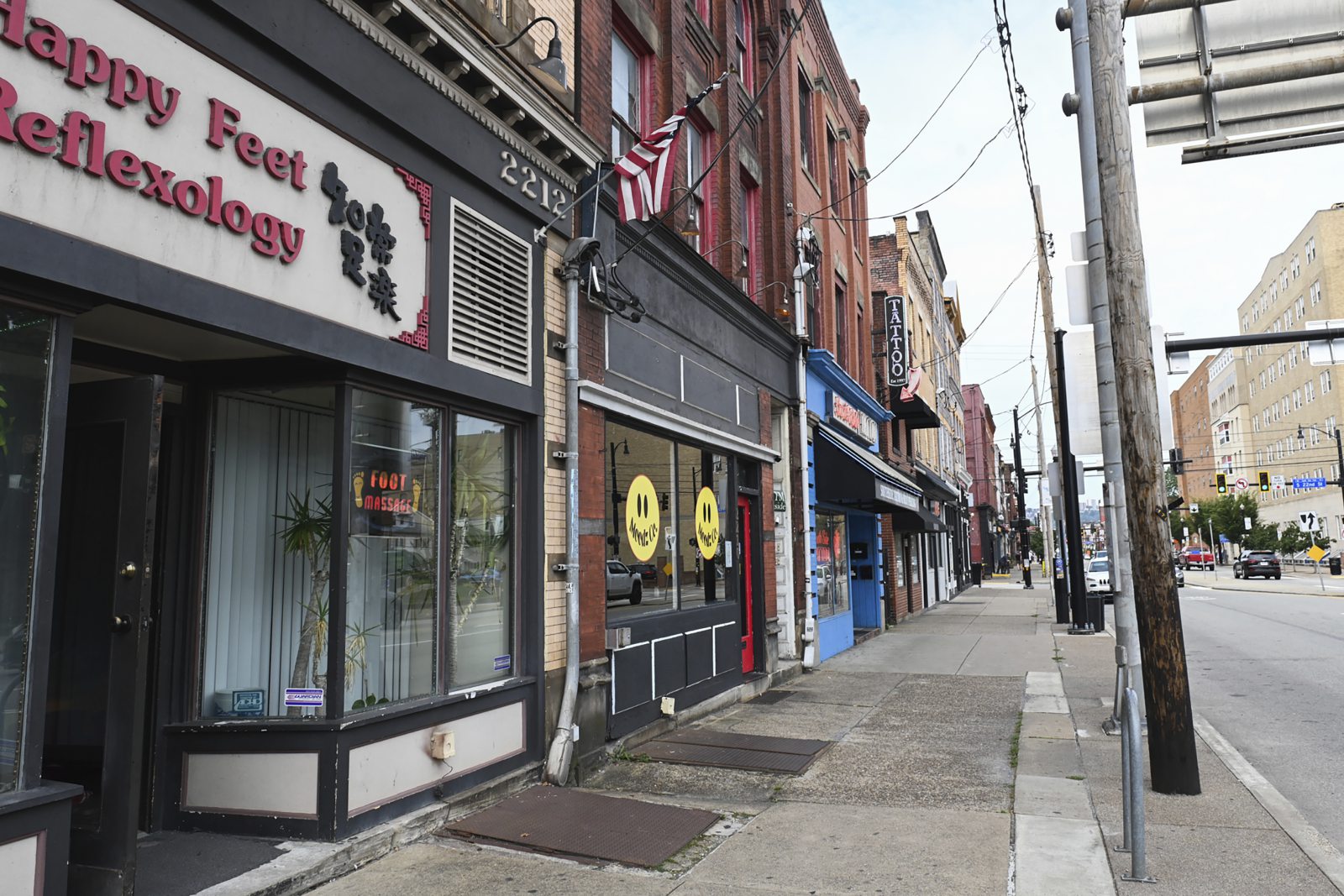
The troubles South Side faces plague entertainment districts around the country. In New Orleans, Michael Ince tackles the same challenges as the director of the office of Nighttime Economy.
“We have a lot of similar problems, a lot of commonalities,” Ince said.
In New Orleans, officials are pushing violence de-escalation training for bar staff. They organize harm reduction programs to provide Narcan and test strips to determine if drinks have been spiked. The city coordinates with the district attorney’s office to take a data-driven approach to tracking — and curbing — small crimes that lead to bigger problems.
Like in South Side, New Orleans focuses on encouraging business owners to be part of the solution, Ince said.
Ince deals with areas in New Orleans that have large concentrations of nightlife businesses crammed into one street.
“High, high concentration of this form of business is a good thing and a difficult thing at the same time,” Ince said.
“It’s easier for us to focus on that area and dedicate our very, very limited resources to an area, and it’s also easier for us to bring those businesses together and work on a solution to what’s going on.”
But those bustling entertainment districts also grapple with problems ranging from violence to noise complaints, drug use to illegal street vendors.
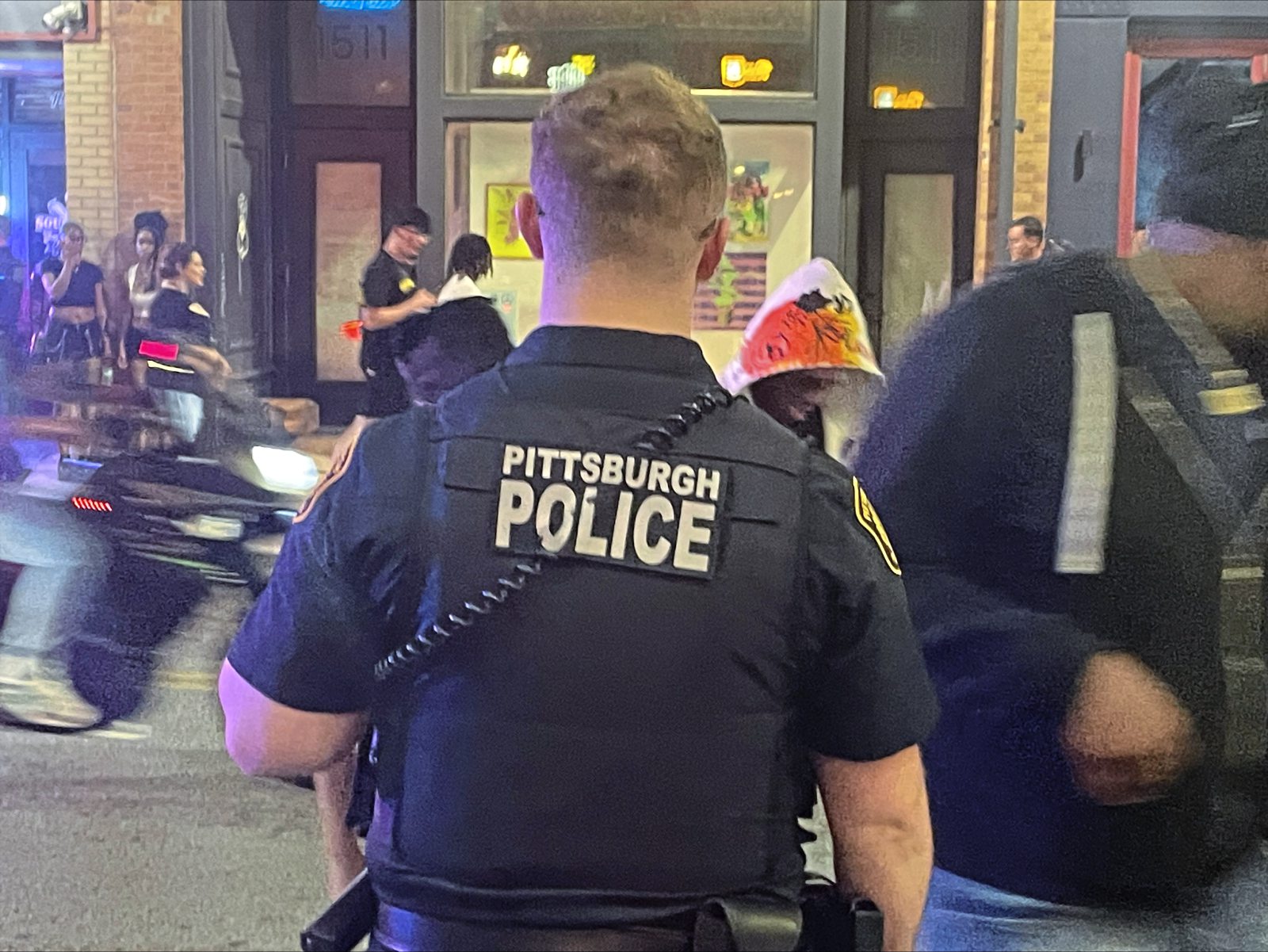
Change won’t come to South Side overnight.
But community leaders believe their efforts are slowly nudging the neighborhood in the right direction.
Don Berman is president and co-founder of South Side CAN, the community group that pushed for a business district manager.
He sees a united front of South Side residents and business owners.
“It used to be where the community would point their fingers at the bars, the bars would point their fingers at the police, the police would point their fingers at the administration, and nobody got anywhere,” Berman said.
That’s no longer the case.
“It’s all of us working together,” Berman said. “People are working really hard to change it. Buildings are built one brick at a time. It’s small, incremental changes that happen.”
Crafting a new personality for South Side is like switching from night to day — literally.
The goal isn’t just to put a positive spin on the neighborhood or spruce up a few sidewalks. The aim is to attract diverse daytime businesses to shift the economy to one that doesn’t rely so heavily on the nighttime crowds seeking out bars and clubs.
“It happens slowly,” Charland said, “but we have to change the mentality so people are like, ‘I can’t believe you haven’t been to East Carson,’ not ‘I don’t want to go there.’”

Julia Burdelski is a Tribune-Review staff writer. You can contact Julia at JuliaBurdelski@triblive.com or via Twitter @JuliaBurdelski
Kristina Serafini is a Tribune-Review photographer. You can contact Kristina via email at kserafini@triblive.com or via Twitter @kristinaserafini
